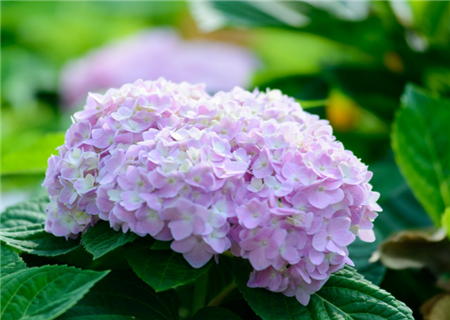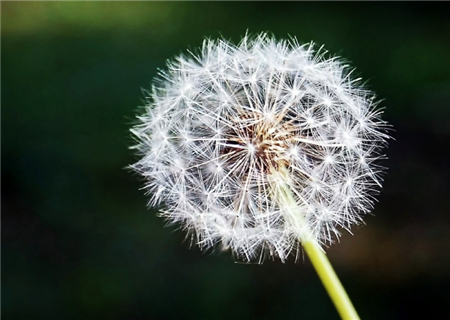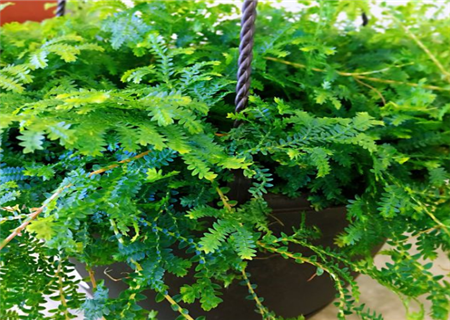Is hydrangea poisonous? How to breed it? How to change the color? (with color blending skills)
Hydrangea is also known as eight immortals, powder ball, hydrangea and so on. According to the relevant historical records, hydrangea was planted in China in the Ming and Qing dynasties, and there are also hydrangeas in many scenic spots. Hydrangea flowers are almost all asexual flowers, artificial cultivation is very developed, including blue, white goose, fuchsia, pink and so on. So is hydrangea poisonous? How to raise hydrangea? How to adjust the color of hydrangea?
Is hydrangea poisonous?
Hydrangea is poisonous.
Hydrangea contains toxic elements in its body, so it is not recommended to raise it indoors, especially if you have children at home, because curiosity is dangerous and troublesome. Friends who like hydrangea can choose to grow them in the courtyard so that they can better absorb nectar.

The toxicity of hydrangea is mainly concentrated in the whole plant, and the smell is different from the usual flower fragrance, and the smell of hydrangea is unpleasant. If you have physical contact or accidental touch, you must wash it with clean water in time to prevent nausea and retching, abdominal pain, headache, body convulsions and so on.
Note: friends with pregnant women at home should not raise hydrangea, the smell of pollen will inevitably cause discomfort, but also easy to cause allergies and other symptoms.
Second, how to raise hydrangea?
1. Soil selection
Hydrangea needs soil with strong penetration and high nutrient content, and loose and fertile sandy loam can be selected. The loam in the basin should remain moist, pay attention to the amount of water not too much, especially in the rainy season, pay attention to drainage, do not cause rotting roots because of too much water. It is recommended that you find a professional gardener in the flower market to configure the soil proportion, which is more conducive to the growth of hydrangea.
2. Water quantity
Hydrangea likes the wet environment, so we should be diligent in watering, but do not water too much, you can water more in spring and summer, because there are many droughts and floods in spring and summer, and the air is relatively dry. The amount of watering can be controlled according to the weather in autumn and need to be reduced again in winter.
Note: Hydrangea is generally the most suitable for growing in the environment of 17mur30 degrees Celsius. The temperature in winter is too low, so we should pay more attention to the problem of keeping warm.
3. Pruning skills
Hydrangea pruning is usually carried out in late spring and early summer, and the flowering period usually ends in May. After picking out the remnant flowers and fallen leaves, new leaf buds can grow after a little pruning, and the top branch buds can also be cut off as cuttings. You can also choose to cut from September to October. Hydrangea has grown a lot of new branches in October, which is suitable for cutting propagation because of the weather.
Third, how to adjust the color of hydrangea?
1. Hydrangea blossoms red flowers are the most common, as long as the soil is slightly alkaline, hydrangea can produce red flowers. In Jiangsu, Zhejiang and Shanghai, because of regional environmental problems, hydrangea can produce red flowers without applying acid fertilizer alone.
2. Hydrangea blossoms blue and purple
The blue-purple flowers of Hydrangea are mainly used to regulate the pH of the soil. Prepare aluminum sulfate, white vinegar and potassium fertilizer, stir the soil, apply aluminum sulfate fertilizer every 10 days before hydrangea flower buds are formed, and water with white vinegar to maintain the acidic state of hydrangea pot soil. In this way, the aluminum ion in the soil can be increased, and the anthocyanin in hydrangea is combined with aluminum ion, and the flower color can turn blue.
Time: 2019-04-07 Click:
- Prev

How to grow dandelions? What should be paid attention to in artificial planting? What are the benefits and risks?
Dandelion is one of the most common plants when we were young, and it has become less and less in the city in recent years. As a perennial herb, dandelion is unforgettable in the hearts of many people because of its beauty drifting with the wind. So how should farmers grow dandelions? What should be paid attention to when planting dandelions?
- Next

"Blue cypress" Cuiyun grass leaves dry how to do? What are the breeding methods? How do you breed?
Cuiyun grass may be relatively rare. It belongs to the perennial herb of Selaginaceae. It is cultivated in many areas of our country and has medicinal value and ornamental value. The whole grass can be used as medicine, can be dried or used freshly. It can also be cultivated as a potted plant at home. So what if the leaves of Cuiyun grass are dry? What are the culture methods of Cuiyun grass?
Related
- Fuxing push coffee new agricultural production and marketing class: lack of small-scale processing plants
- Jujube rice field leisure farm deep ploughing Yilan for five years to create a space for organic food and play
- Nongyu Farm-A trial of organic papaya for brave women with advanced technology
- Four points for attention in the prevention and control of diseases and insect pests of edible fungi
- How to add nutrient solution to Edible Fungi
- Is there any good way to control edible fungus mites?
- Open Inoculation Technology of Edible Fungi
- Is there any clever way to use fertilizer for edible fungus in winter?
- What agents are used to kill the pathogens of edible fungi in the mushroom shed?
- Rapid drying of Edible Fungi

